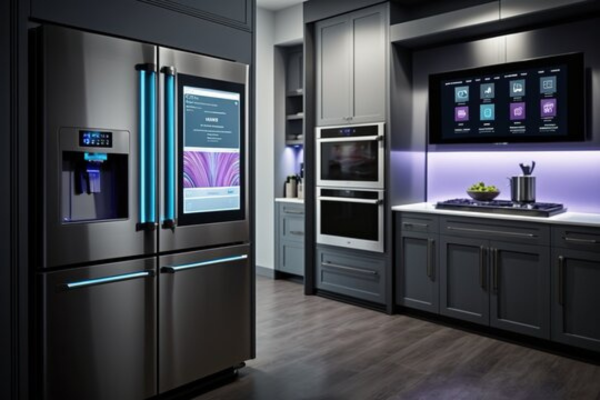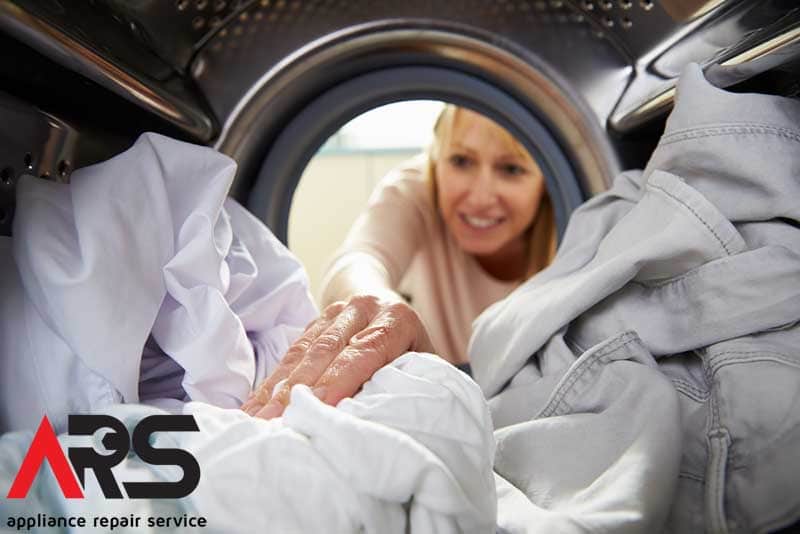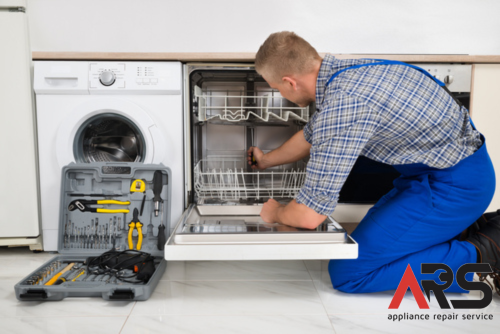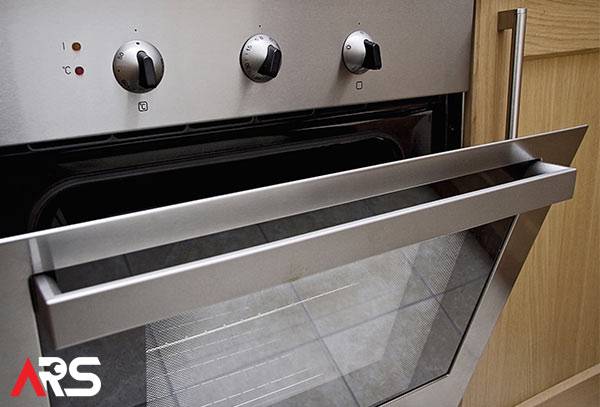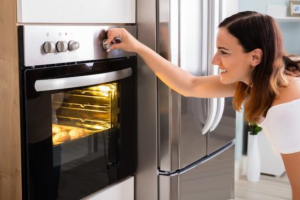
Samsung Oven Error Codes: What They Mean and How to Fix Them
- E08 , no heat: check bake/broil elements (or igniter on gas), temp sensor, wiring.
- E-OA , overheating: cool down, check temp sensor and stuck relay on the control.
- E27 / E28 , bad temp sensor or harness fault.
- SE , stuck or dead key on the touch panel.
- LE , low or unstable voltage (power supply issue).
- E54 , main control board fault.
- E-55 , panel ↔ control communication fault.
- cE-56 , internal control error.
- E-OE , door lock did not lock or unlock.
Safety first: switch the breaker off before removing panels or testing parts. 240V can be dangerous.
See brand help on our Samsung appliance repair page. For general oven fixes, visit Oven Repair.
Before you start
- Turn the oven off at the breaker for 2–3 minutes, then back on. Many codes clear after a clean power reset.
- Make sure the wall outlet and cord are not hot, burnt, or loose.
- Have a flashlight, #2 Phillips, nut driver, and a multimeter (ohms) ready.
- Find your model/serial sticker (door frame, drawer area, or rear panel). Take a photo for reference.
Fast reference table
| Code | Meaning | First checks | Typical symptoms |
|---|---|---|---|
| E08 | No heat | Elements/igniter, temp sensor, wiring | Oven cold, preheat stalls |
| E-OA | Overheating | Let cool, temp sensor, stuck relay | Runs too hot, burning smell |
| E27 / E28 | Temp sensor fault | Sensor plug, harness, sensor ohms | Wild temps, long preheat |
| SE | Defective key | Dry/clean panel, reseat ribbon | Buttons stuck or dead |
| LE | Low voltage | Dedicated circuit, terminals tight | Dim display, random reboots |
| E54 | Control fault | Board plugs, ground, reset | Random errors, no response |
| E-55 | Panel comms | Ribbon cable, corrosion | Panel unresponsive |
| cE-56 | Internal control | Reset; test board | Returns after reset |
| E-OE | Door lock error | Lock motor/switch, latch path | Door won’t lock/unlock |
E08 , Oven not heating
What it means: The oven is not reaching set temperature.
Likely causes: open bake/broil element (electric), failed igniter or gas valve (gas), bad temp sensor, loose or burnt wiring, or a control relay fault.
DIY steps:
- Reset power. Try Bake then Broil. Note which one fails (helps narrow the faulty circuit).
- Elements (electric): look for blisters or breaks. Test continuity (no continuity = replace). Typical element resistance is often in the tens of ohms.
- Igniter (gas/dual fuel): should glow bright within ~30–60s. If it glows but the burner never lights, the igniter is usually weak. Replace the igniter first.
- Temp sensor: reseat the connector. See “How to test the temp sensor” below.
- Inspect wiring from parts to the control. Replace burnt spades or melted wires.
E-OA , Overheating
What it means: The oven got too hot or the board “thinks” it did.
Likely causes: bad temp sensor, shorted sensor harness, or a stuck heater relay on the control board.
DIY steps:
- Let the oven fully cool. Do not use self-clean until fixed.
- Check the temp sensor value (see table below) and the harness for cuts or shorts to chassis.
- If it overheats again with a good sensor, the control relay may be stuck closed. Board service/replacement may be needed.
E27 / E28 , Temperature sensor fault
What it means: The control sees an open, short, or out-of-range reading.
DIY steps:
- Kill power. Pull the sensor plug at the back wall inside the oven or from behind.
- Measure resistance at room temp. If way off (see table), replace the sensor.
- Check the harness from sensor to control for pin damage or broken insulation.
SE , Defective key
What it means: A touch key is stuck or not reading.
- Reset power. Clean and dry the glass.
- Open the console. Reseat the flat ribbon. Look for corrosion or kinks.
- If still bad, replace the touch panel (and ribbon if worn).
LE , Low voltage
What it means: Power supply dipped below spec or is unstable.
- Use a dedicated circuit. Do not share with other heavy loads.
- Inspect the terminal block on the oven. Tighten loose lugs. Replace burnt parts.
- If the home supply is unstable, speak with an electrician.
E54 , Electronic control board error
What it means: Internal control fault.
- Reset power. Reseat all board connectors. Check for burnt spots near relays.
- If the error returns or functions are random, the board likely needs repair or replacement.
E-55 , Touch panel communication error
What it means: The panel and board are not talking.
- Power cycle. Reseat or replace the ribbon cable first.
- Check for moisture or corrosion in the console.
- If still failing, test/replace the panel and/or main board.
cE-56 , Internal control issue
What it means: A control circuit failed self-check.
- After a reset, if the code returns, plan for board diagnosis and likely replacement.
E-OE , Door lock error
What it means: The door lock did not move or did not report the correct state.
- Wait until the oven is cool (especially after self-clean).
- Check the latch path for debris or a bent hook.
- Listen for the lock motor. If silent, test the motor and door lock switch.
- Manually release the lock (access varies by model; often from the top once the console is open).
How to test the temperature sensor (easy)
- Power off. Unplug sensor from its connector.
- Measure resistance (Ω) across the two sensor pins.
| Approx. Temp | Typical Reading* |
|---|---|
| 20–25 °C (room) | ~1,000–1,100 Ω |
| 100 °C | ~1,350 Ω |
| 260 °C | ~1,650 Ω |
*Values are typical for many Samsung oven probes; check your model’s service data if available.
Electric vs. gas / dual-fuel note
- Electric ovens: heat comes from bake/broil elements controlled by relays.
- Gas or dual-fuel ovens: no glow or no flame usually points to the igniter. A weak igniter often glows but never opens the gas valve, replace the igniter first.
Signs of a control board problem
- Heats when it should be off (stuck relay).
- Random beeps/restarts, dead display, or codes that return after a clean reset.
- Visible burn marks near relays or a hot electrical smell.
Prevent issues
- Avoid running self-clean right before a big event; it runs very hot and can expose weak parts.
- Keep the oven cavity and door gasket clean so heat control stays stable.
- Do not slam the door; it can damage the lock and the panel.
- Use the right circuit and tight electrical connections.
What to note before calling
- Exact error code(s) and when they showed up (after self-clean, during preheat, etc.).
- Which functions fail (Bake, Broil, Fan, Lock).
- Any smells, clicks, or buzzing you hear.
- Model and serial number, and a quick photo of the cord/terminal block if it looks burnt.
When to call a pro
- Codes return right after a reset.
- You find burnt wiring, a cracked element, or a swollen/burnt control board.
- Door stays locked or the unit overheats.
We diagnose boards, relays, sensors, elements, igniters, and locks, and replace only what you need. See brand help on our Samsung appliance repair page, or visit Oven Repair for general service info.
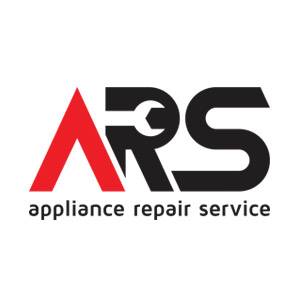
ARS Appliance Repair Service has been trusted across Toronto, Ottawa, and Southern Ontario for over a decade. Our licensed, manufacturer-authorized technicians specialize in repairing all major household and commercial appliances with genuine parts and warranty-backed service. From refrigerators and washers to ovens, dishwashers, and more, we restore appliances quickly, professionally, and correctly the first time, earning the confidence of homeowners and businesses throughout the region.


